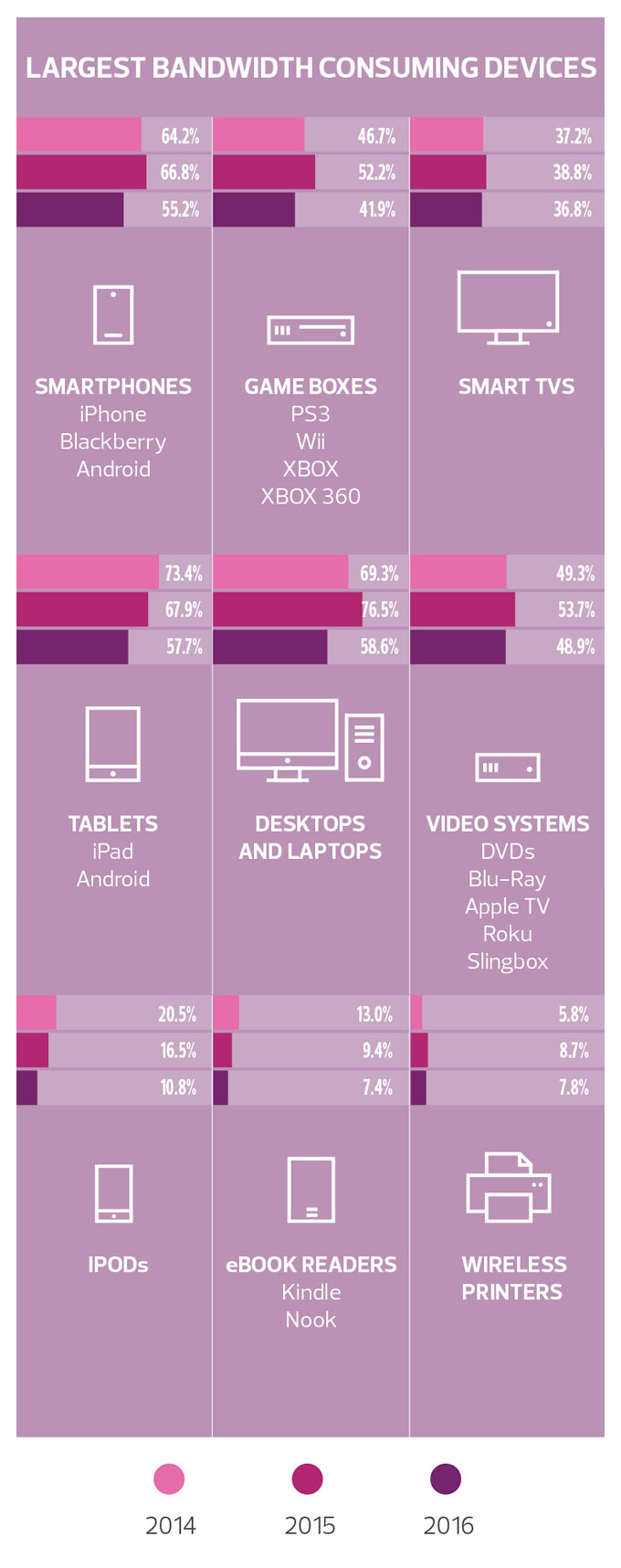What's Eating Up Campus Bandwidth? [#Infographic]
Smartphones, tablets, smart TVs and game boxes: Name any gadget, and undergrads likely own it. In fact, data from the latest College Explorer report from re:fuel agency shows that the average college student brings seven connected devices to campus.
College and university network professionals, particularly those managing residential networks, must decide whether and how to accommodate the significant amounts of traffic these devices generate, taking into account student expectations, the state of current infrastructure and, of course, budget limitations.
The 2016 State of ResNet Report provides insights into student device usage that can help guide higher ed leaders in their decisions. Published by the Association for College and University Technology Advancement (ACUTA), the report is the result of surveys of higher education IT leaders between November 2015 and January 2016.
According to ACUTA survey data from 2014 onward, desktops and notebooks have replaced tablets as the largest bandwidth consumer on campus. The report attributes this change to the rise of high-bandwidth applications and activities, such as video and music streaming, gaming and online learning.
Still, the report offers good news to higher ed IT professionals: “This year’s data shows that concerns have tapered for all network-enabled devices and their usage to affect bandwidth consumption,” it states.
Check out the infographic below to see how bandwidth demand breaks down by device, and then read more about keeping up with connection demands on campus.










